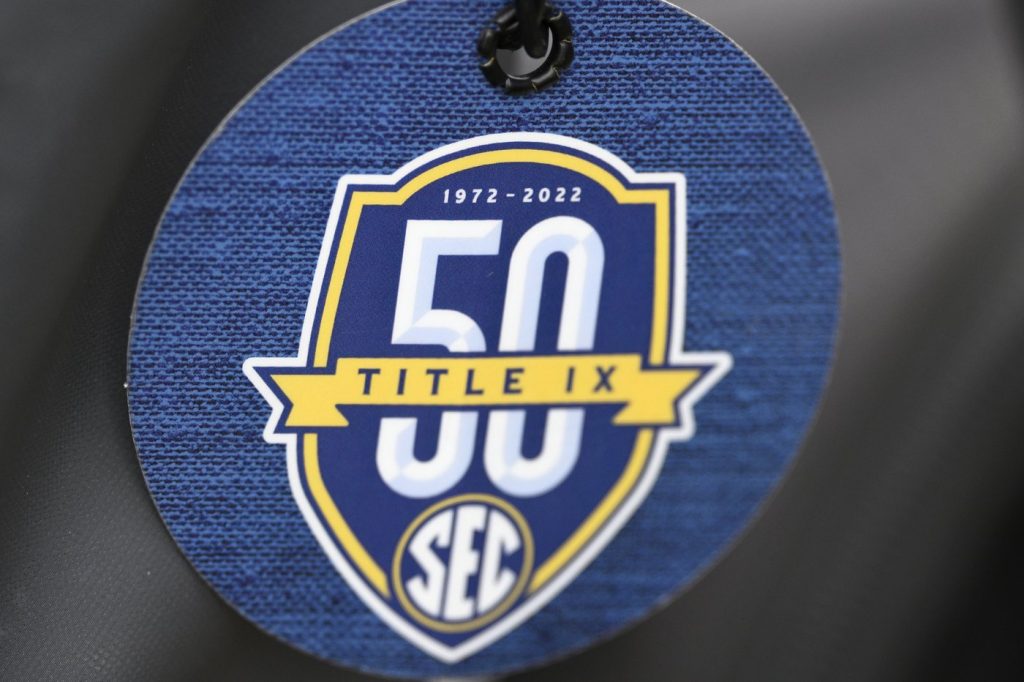Title IX memo throws wrench in plans for schools to pay NIL money directly to athletes

NASHVILLE, Tenn. (AP) — Plans for colleges to pay athletes directly for their name, image and likeness deals would run afoul of Title IX, the Department of Education said in guidance issued Thursday that adds more confusion to the shifting landscape in college sports.
The nine-page memo from the department’s Office for Civil Rights said NIL money that goes to athletes should be treated the same as athletic financial aid — i.e., scholarships. It’s a position that, if it remains in place after President-elect Donald Trump takes office, could upend plans that many schools are making for next school year.
Under terms of the House settlement, a game-changing legal agreement that’s expected to be approved this spring, universities will be able to pay athletes directly under a revenue-sharing plan that would see the biggest schools distribute around $20.5 million each to athletes.
Advertisement
Many schools have publicly stated that the majority of that money would go to football and men’s basketball players, which, according to the guidance, would be in violation of Title IX.
“When a school provides athletic financial assistance in forms other than scholarships or grants, including compensation for the use of a student-athlete’s NIL, such assistance also must be made proportionately available to male and female athletes,” the memo said.
Passed in 1972, Title IX requires that schools pay out financial assistance in proportion to the number of students of each gender who play sports on campus. It also calls for schools to provide opportunities to play varsity sports in proportion to the gender distribution on campus.
NCAA board chair Linda Livingstone said the association doesn’t give guidance to schools about Title IX compliance.
“We’re going to have to get back to our schools and see what the implications are,” said Livingstone, who is the president at Baylor.
Advertisement
Illinois athletic director Josh Whitman, who serves as the chair of the NCAA Division I Council, said “the world has changed over and over again just in the last six months.”
“We’ve been building plans on top of plans for some time now, and this is the most recent example of where we’re going to take the guidance under advisement and figure out what, if any, changes we have to make to the strategies we’ve developed,” he said.
The guidance was less clear on how money from third-party collectives that are closely affiliated with the schools will be treated. The memo said those payments, which are the norm but were expected to be reduced under the new rules, were not considered financial assistance.
But, the guidance said, “it is possible that NIL agreements between student-athletes and third parties will create similar disparities and therefore trigger a school’s Title IX obligations.”
David Ridpath, a former president of the Drake Group, an NCAA watchdog, called the memo “not surprising, and very consistent with the law.”
Advertisement
“There was always a question of how Title IX applies to NIL. Now there is just more guidance,” he said. “It’s essentially just following the law virtually the way it’s always been written.”
Though the government has the authority to crack down on schools that violate Title IX standards, typically those actions come from athletes suing schools, alleging they violated the law.
There’s one such lawsuit involving more than two dozen female athletes who are suing the University of Oregon.
The plaintiffs’ attorney, Arthur Bryant, said the fact sheet backed their claims.
“It makes clear our approach in the Title IX lawsuit is correct and strengthens our case,” Bryant told Sportico. “It also signals that the proposed settlement in House v. NCAA should not be approved.”
Advertisement
___
Mumphrey reported from Phoenix.
___
The Associated Press’ education coverage receives financial support from multiple private foundations. AP is solely responsible for all content. Find AP’s standards for working with philanthropies, a list of supporters and funded coverage areas at AP.org.
Advertisement
Eddie Pells And Cheyanne Mumphrey, The Associated Press